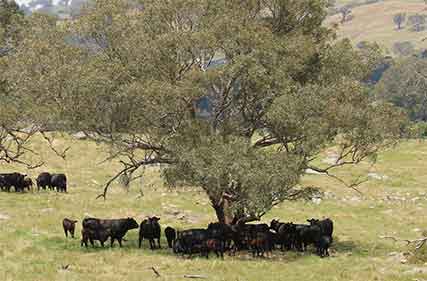 Cattle Australia has launched an information paper outlining the proposed application of the Land Management Commitment and is calling for feedback from beef producers, consumers, supply chain stakeholders and the wider community.
Cattle Australia has launched an information paper outlining the proposed application of the Land Management Commitment and is calling for feedback from beef producers, consumers, supply chain stakeholders and the wider community.
CA Chief Executive Officer, Dr Chris Parker, said the Land Management Commitment will enable producers and landholders to demonstrate their sustainability credentials, including deforestation-free, in a way that recognises the unique Australian landscape.
“CA, along with our funding partners, is leading the way by developing this vital environmental policy, which seeks to address the lack of a clear definition on deforestation aligned to our Australian land management practices. In addition, the meaning of ‘land that is predominantly under agricultural use’ is often unclear and results in uncertainty for defining ‘forest’ and determining ‘deforestation’,” Dr Parker said.
“Landing a credible definition for ‘land that is predominantly under agricultural use’ is a central focus for this work because it flows on to inform definitions of ‘forest’ and ‘deforestation’. Through this process, we are balancing the need to empower producers to undertake sustainable agricultural practices, protect our natural systems and maintain market access.
“To ensure equitable outcomes for all producers are achieved, it is vital the solution is industry-led, in consultation with producers, service providers, government officials and supply chain partners.
“The information paper will support the development of a voluntary credential the supply chain should seek to align with, and empower producers to make informed decisions regarding economic incentives for alignment, without imposing any additional legal obligations.”
The information paper outlines Australian state and territory legislation and influential international frameworks, including from the Food and Agriculture Organization (FAO), Accountability Framework initiative (AFi), and European Union Deforestation Regulation (EUDR).
It applies the required Australian agricultural context and Australian landscapes, and contextualises the size of the geographical area.
“A key focus of this work is to provide clarity in a way that is internationally credible and fit-for-purpose in Australia,” Dr Parker said.
“In undertaking the work, particular regard is also being given to global food security requirements and climate and biodiversity concerns, with the view to addressing evolving market pressures, Government regulations and disclosure requirements.”
It is imperative producers and supply chain participants actively engage in the process by reviewing and providing feedback on the information paper.
The five sections of the information paper outline the core concepts underpinning the application of the Land Management Commitment, including:
- Background: An overview of the global and local context driving the need for a Land Management Commitment and sets out the principles informing the development of this commitment.
- Definitions & Frameworks: An outline of the key frameworks and definitions that need to be interpreted in the Australian context, so the Land Management Commitment is internationally credible, but appropriate for the Australian context.
- Policy application: An explanation of how the different definitions will interact with each other when used to identify the risk of a land management activity being flagged as deforestation under external review.
- Australian case studies: A non-exhaustive list of Australian case studies used to help clarify how the policy would work in implementation. They help to clarify the Agricultural Use classifications and the risk of a land management activity being flagged as deforestation based on the area’s classification.
- Make-good mechanism: Provides clarity on how the land management practices could be applied retrospectively from December 31, 2020, to minimise the risk of producers being excluded from markets.
Consultation on the information paper will close at midnight (AEST) on Sunday, June 23.
The information paper and feedback form can be found on the Cattle Australia website.
-Cattle Australia
